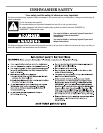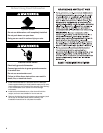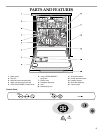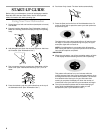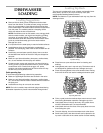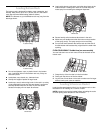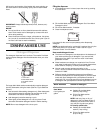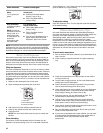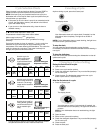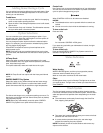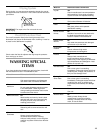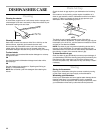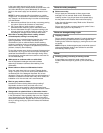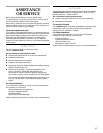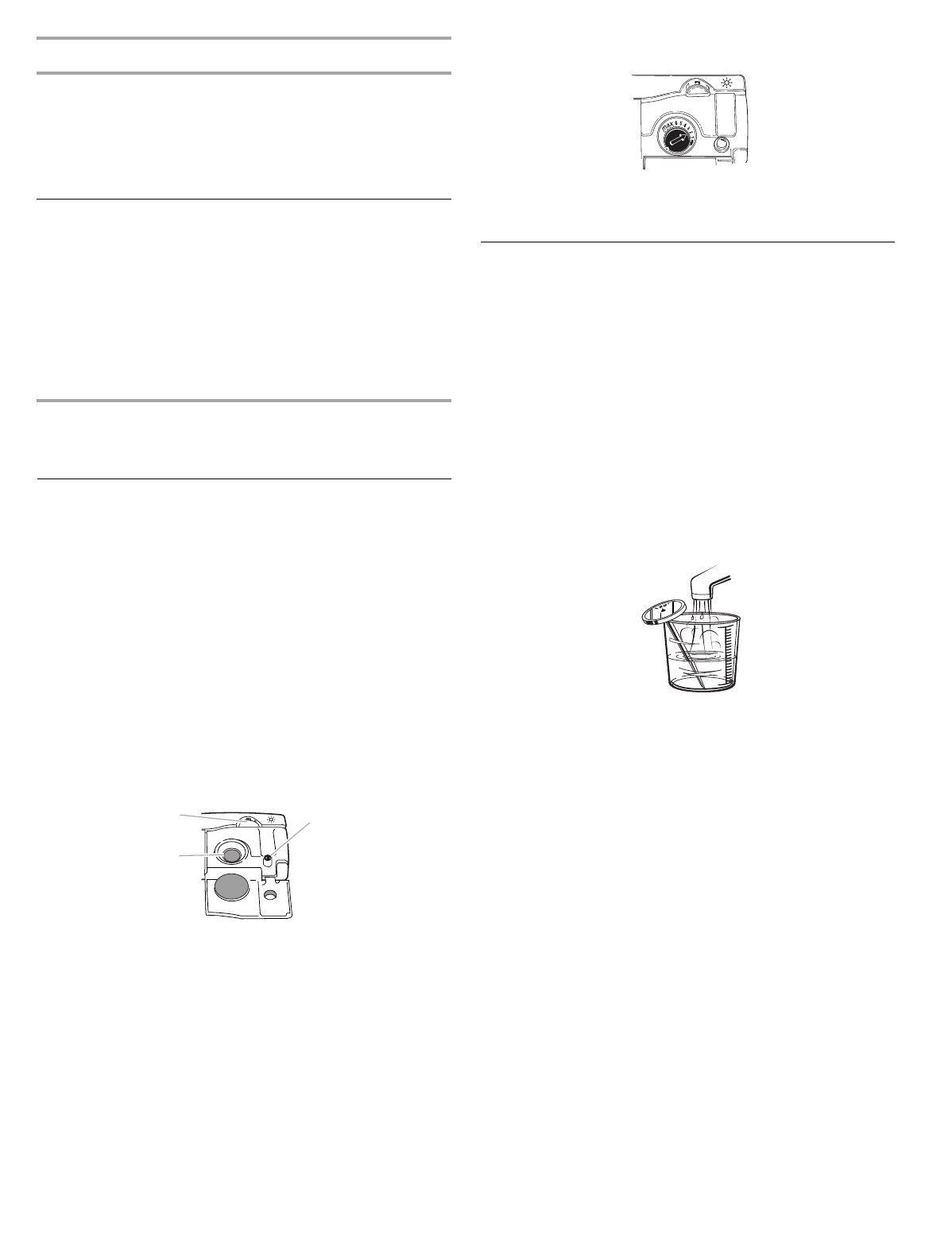
10
NOTE:
Fill amounts shown are for standard powdered detergent.
Amounts may vary if you use liquid or concentrated powdered
detergent. Follow instructions on the package when using liquid
dishwasher detergent or concentrated powdered detergent.
Rinse Aid Dispenser
Rinse aids prevent water from forming droplets that can dry as
spots or streaks. They also improve drying by allowing water to
drain off of the dishes during the final rinse by releasing a small
amount of the rinse aid into the rinse water. Your dishwasher is
designed to use a liquid rinse aid. Do not use a solid or bar-type.
Filling the dispenser
The rinse aid dispenser holds 4.8 oz (145 mL) of rinse aid. Under
normal conditions, this will last for about three months. Rinse aid
is released through an opening in the dispenser. When latched
properly, the cover remains closed. The cover should be opened
only when refilling the dispenser. You do not have to wait until the
dispenser is empty to refill it. Try to keep it full, but be careful not
to overfill it.
1.
Make sure the dishwasher door is fully open.
2.
Open the dispenser by pushing the cover latch.
3.
Add rinse aid until the indicator window looks full.
4.
Clean up any spilled rinse aid with a damp cloth.
5.
Close the cover.
NOTE:
The cover latch clicks when the cover is closed and
latched.
Rinse aid setting
The amount of rinse aid released into the final wash can be
adjusted. The factory setting is at 2. For most water conditions,
set the adjuster to 1 or 2. If there are rings or calcium (hard water)
spots on dishes, try a higher setting.
To adjust the setting
Open the dispenser cover. Turn the adjuster inside the dispenser
to the desired setting.
Dishwasher Efficiency Tips
Hot water dissolves and activates the dishwashing detergent.
Hot water also dissolves grease on dishes and helps glasses dry
spot-free. Is the water temperature too low? For best
dishwashing results, water should be 120°F (49°C) as it enters
the dishwasher. Loads may not wash as well if the water
temperature is too low. Water that is too hot can make some soils
harder to remove and cause certain detergent ingredients not to
function. If your water heater is located far from the dishwasher, it
may be necessary to run the hot water at the faucet closest to the
dishwasher to minimize the amount of cold water in the water
line.
To check water temperature
1.
Run hot water at the faucet closest to your dishwasher for at
least 1 minute.
2.
Place a candy or meat thermometer in a glass measuring
cup.
3.
Check the temperature on the thermometer as the water is
running into the cup.
■
To save water, energy and time, do not rinse dishes before
putting them into the dishwasher.
■
Use the Normal cycle whenever possible. This cycle uses
less hot water and energy than other cycles.
■
Use a delay feature (on some models) to run your dishwasher
during off-peak hours. Local utilities recommend avoiding
heavy usage of energy at certain times of day.
■
During the summer, run your dishwasher at night. This
reduces daytime heat buildup in the kitchen.
■
Use an air dry, or an energy-saving dry option whenever
possible. Allow longer drying times (overnight) when using
these options. Use a rinse aid to improve drying.
■
Use cycles or options that add extra heat to the wash or rinse
portion of the cycle only when needed.
■
Run your dishwasher with full loads. Run a rinse cycle after
meals until the dishwasher is full.
■
If your home is equipped with a water softener, you may want
to avoid starting the dishwasher during the regeneration of
the softener, as this may contribute to poor wash
performance.
Medium to Hard
Water
7 to 12 grains per
gallon
For normal and heavily
soiled loads
■
Partially fill the Main Wash
section (7 tsp or 35 g)
■
Fill the Pre-Wash section
(4 tsp or 20 g)
Very Hard Water
13 grains per gallon
and above
NOTE:
It might be
necessary to use the
Heavy cycle, or a
normal cycle with
Hi-Temp Scrub, for
best wash
performance with
very hard water.
For normally and
heavily soiled loads
■
Fill the Main Wash section
(8 tsp or 40 g)
■
Fill the Pre-Wash section
(4 tsp or 20 g)
■
Turn the rinse aid dispenser to a
higher setting. See “Rinse Aid
Dispenser” later in this section.
1. Cover latch
2. Rinse aid dispenser
3. Indicator window
Water Hardness Amount of Detergent
1
2
3




